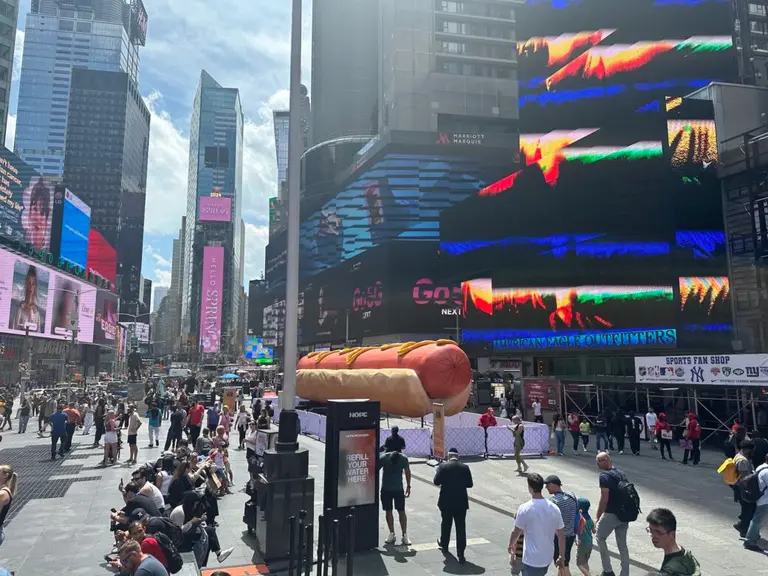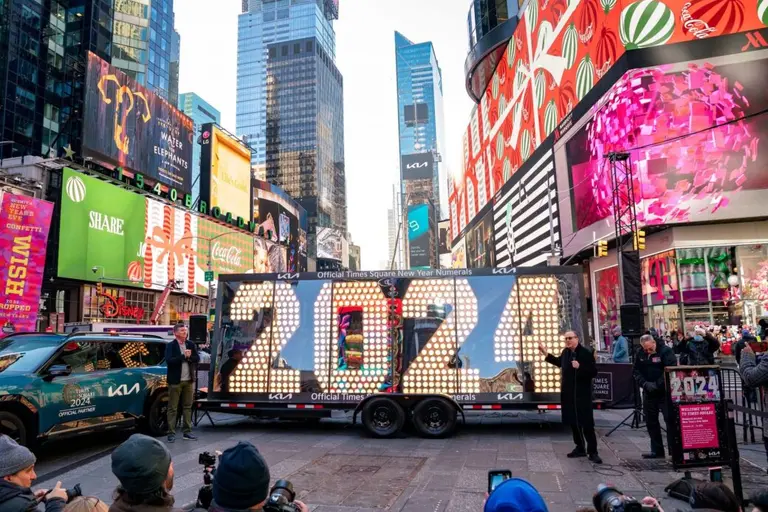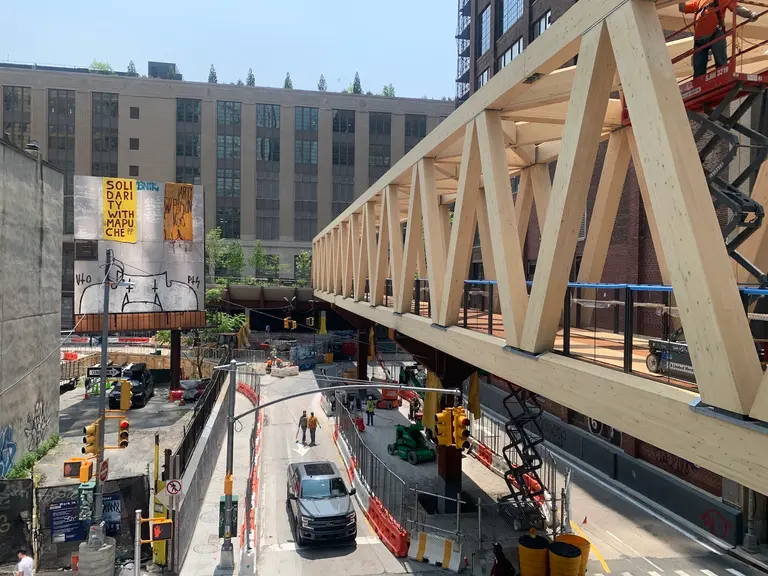How the Times Square Ball is made

The 2007 Times Square Ball during construction. Image courtesy of Focus Lighting.
When midnight hits this New Year’s Eve, the Times Square Ball will dazzle people just the same from five feet away or on their television. Making this magic happen is no easy feat, though. To learn a bit more about how the nearly 12,000-pound ball was created, we chatted with principal designer Christine Hope of Focus Lighting, the architectural lighting design firm that conceptualized the current ball more than 10 years ago. From engineering a new system to make all 2,688 Waterford Crystal triangles sparkle to dreaming up the magical light show that plays leading up to the ball drop, Focus Lighting shares the inside scoop on this world-famous tradition.

Image courtesy of Focus Lighting
Focus Lighting first got involved with the project in 2007, when they were approached to remake the ball for the 100th anniversary of the Times Square Ball. That year, the light bulbs were replaced with LEDs. Since everyone loved that ball so much, Focus was invited back in 2008 to create one that was twice as big. Known as the Big Ball, this version is permanently located atop One Times Square throughout the year.
They started the process by consulting with Waterford Crystal, who has been creating the crystal triangles that make up the face of the ball, a geodesic sphere, since 2000. Each year they replace them with new triangles that have been cut in a pattern that reflects their “gift” theme for that year. As Waterford explains on their website, the “gifts” are “a theme of global aspiration whose value is universally treasured.” This began in 2014 with the “Gift of Imagination” and each year add a new design to the set, which will conclude in 2023 with the “Gift of Love.”

Image courtesy of Focus Lighting
The ball today is made of 2,688 Waterford Crystal triangles. They are different sizes, ranging from 4.75 to 5.75 inches per side. As Focus Lighting breaks down for us:
For Times Square 2019, 288 Waterford Crystal triangles introduce the new Gift of Harmony design of small rosette cuts flowing into each other in beautiful harmony. 288 are the Gift of Serenity design of butterflies flying peacefully above a crystal meadow capturing the spirit of serenity. 288 are the Gift of Kindness design consisting of a circle of rosettes symbolizing unity with the fronds reaching out in an expression of kindness. 288 are the Gift Of Wonder design composed by a faceted starburst inspiring our sense of wonder. 288 are the Gift of Fortitude design of diamond cuts on either side of a crystal pillar to represent the inner attributes of resolve, courage and spirit necessary to triumph over adversity. The remaining 1,248 triangles are the Gift of Imagination design with a series of intricate wedge cuts that are mirrored reflections of each other inspiring our imagination.
Christine tells us that when they got involved, “Waterford wanted to emphasize that and make it feel much more like crystal.” In the prior design, “a lot of the intricacies of the pattern were being lost.” After playing around with different shapes and configurations, Christine and her team realized that the LED lights were hitting the back of the crystal pieces, which are flat. It’s the front of the crystals that have all the facets to catch light and sparkle. Therefore, Focus came up with an idea to have the cutting on the back side of the crystal.


The mirror chambers (bottom) and the LED modules behind them get tested (top). Images courtesy of Focus Lighting
Their next idea was to create what they call mirror chambers, or individual chambers of light for each section. The crystal triangles are bolted to 672 of these LED modules, which are then attached to the aluminum frame of the ball. By moving the LEDs closer to the surface, they are able to better refract off the crystal. Plus, the separation of each triangle allows the lights to be controlled individually to create more vibrant colors and intricate patterns. In fact, the ball can display a palette of more than 16 million colors. Each module contains 48 LEDs, a total of 32,256 LEDs on the whole ball. Think this sounds heavy? You’re right! The ball is 12 feet wide and weighs 11,875 pounds!

Image courtesy of Focus Lighting
One thing Christine tells us that most people don’t realize about the ball is that there is an actual programmed light show that tells a story leading up to the ball drop. Focus created it in 2009. It begins with the raising ceremony at 6 pm when the ball travels to the top of the post. There are seven different five-minute shows, one for each hour, that play at the top of each hour and then every 15 minutes. Each show buildings in excitement until the midnight show. Here they are:
6 pm – Classic Looks
7 pm – History of Art & Spectacle
8 pm – International Celebration
9 pm – Wonders of Nature
10 pm – The Four Seasons of Change
11 pm – Let There Be Light
12 pm – Happy New Year – Let There Be Joy
Of course, we had to ask Christine what it was like counting down to midnight in 2007. In a previous interview, she told 6sqft, “[That first year,] we went the day before, checked everything, triple checked everything.” These days, Christine watches on television but says, “I still feel a little bit nervous every year at about 11:58 PM. I’m like, ‘Oh, god. Please, work.'”
Editor’s note: The original version of this story was published on December 26, 2019.
RELATED:
Interested in similar content?
Leave a reply
Your email address will not be published.


































Fascinating! Our son was an Interior Design student, recently graduated with a B.F.A. from CSULB, who had the priveledge of visiting your facility. He had nothing but high praises regarding the staff & what is produced there.